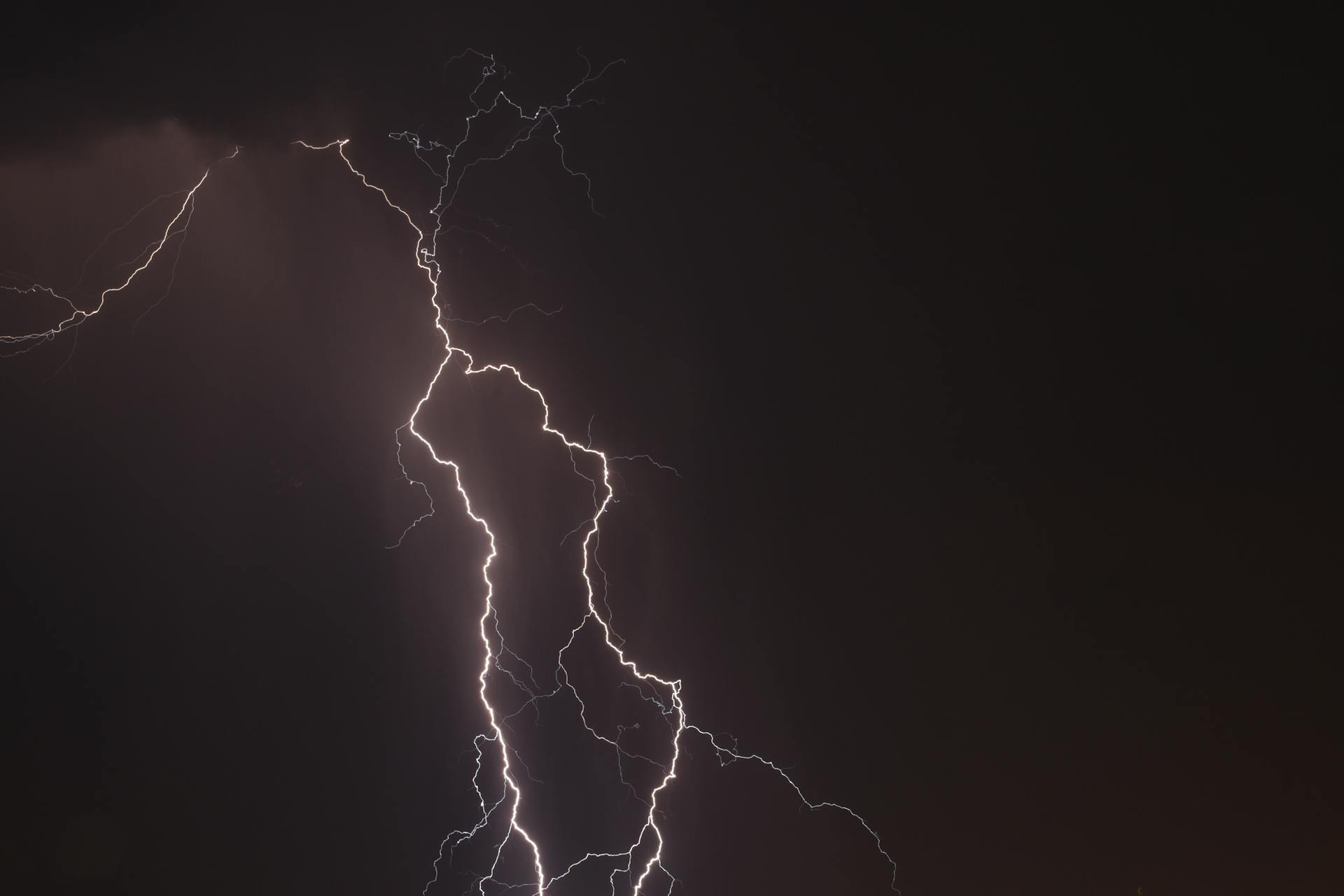
Shock collar marks on dogs can be a painful and distressing issue for pet owners. The marks are usually caused by the electrical stimulation from the collar, which can lead to burns, blisters, and scarring.
Dogs may exhibit signs of shock collar marks, such as redness, swelling, and discharge. These symptoms can be severe and may require veterinary attention.
The severity of shock collar marks depends on the duration and intensity of the electrical stimulation. For example, a study found that prolonged use of shock collars can lead to deeper tissue damage.
Treatment for shock collar marks typically involves addressing the underlying cause, which is the use of the shock collar.
Causes and Prevention
Preventing shock collar marks is crucial to keeping your furry friend comfortable and healthy. A collar that's too tight can restrict blood flow to the tissue underneath, leading to skin irritation and sores.
Moisture is another culprit behind shock collar marks. If your dog's collar gets wet and isn't removed and dried thoroughly, it can cause skin irritation and sores.
Friction from tight collars can also lead to neck sores. It's essential to check your dog's collar regularly to ensure it's not causing any discomfort.
Prolonged use of dog collars can cause skin damage. Electronic dog collars should be kept from being left on for 8-10 hours, and you should give your dog breaks from wearing the shock collar to allow their skin to breathe and recover.
Here are some common causes of shock collar marks:
- Improperly fitted collars
- Moisture
- Friction from tight collars
- Prolonged use of dog collars
To prevent shock collar marks, make sure to rotate your dog's collar every two hours and adjust it to ensure a proper fit. You should be able to insert two fingers between the collar and your dog's skin.
Treatment and Care
If your dog develops shock collar sores, treat them promptly. It's essential to address the issue quickly to prevent further irritation and potential infections.
Shock collar sores, also known as pressure necrosis, can be caused by misusing or malfunctioning e-collars. They're more common than you think, and it's crucial to recognize the signs early on.

Keep the shock collar on for no more than 2 hours at a time to prevent excessive pressure on the contacts. Trapped moisture beneath the collar can increase the chances of irritation, so make sure to check your dog regularly.
You should be able to insert two fingers between the collar and the dog's skin to ensure a proper fit. This will help prevent pressure necrosis and keep your dog safe and comfortable.
To stop the itching, consider using rooibos tea, topical or oral steroids, and antihistamines. These remedies can help alleviate hot spots and prevent further skin issues.
Keeping your dog well-groomed, especially around the neck, is essential to prevent skin issues. Regular grooming can help identify potential problems early on and prevent them from becoming severe.
Electronic Safety
Electronic Safety is a top concern when it comes to shock collars. Shock collars can cause electrical shock, which can lead to serious injury or even death.
If a shock collar is not properly maintained, the battery can leak acid, causing burns or other injuries.
The American Society for the Prevention of Cruelty to Animals (ASPCA) recommends against using shock collars due to the risk of electrical shock.
Understanding Sores
Shock collar marks can be a real concern for dog owners, and it's essential to understand what causes them. E-collar sores result from the prolonged pressure from the collar's contact points, which can dig into the skin and create friction.
Prolonged use of dog collars, including shock collars, can lead to pressure necrosis. This is because the constant pressure restricts blood flow to the affected area, leading to tissue damage and the formation of ulcers or wounds.
Friction from tight collars is another common cause of shock collar marks. If the collar is too tight, it can cause constant friction and movement against the skin, leading to neck sores.
Moisture can also contribute to shock collar marks. If a dog collar or shock collar gets wet and is not removed and dried thoroughly, it can result in skin irritation and sores.
Here are some common symptoms to watch out for:
- Redness: One of the initial signs of collar sores is redness around the neck area where the collar sits.
- Swelling: Dogs with collar sores may experience swelling in the affected area.
- Pain or Discomfort: Dogs may exhibit signs of pain or discomfort when pressure is applied to the collar sore area.
- Skin Breakdown: In severe cases, the skin can break down and form open sores or ulcers.
- Hair Loss: Collar sores can cause hair loss around the neck area due to constant friction and pressure.
The Verdict
If you're planning to use an electric dog collar, be sure to avoid the 5 improper ways of using them that can burn your dog's neck.
Using an electric dog collar can be a bit tricky, so it's essential to get it right.
Firstly, make sure you're not leaving the collar on your dog for too long, as this can cause burns and sores. This can be a serious issue, so it's crucial to monitor your dog's comfort level.
To treat sores or burns caused by an electric dog collar, you'll need to keep the area clean and apply a topical antibiotic ointment. This will help prevent infection and promote healing.
Avoid using an electric dog collar on a dog that's already in pain or discomfort, as this can exacerbate the issue. This is especially true if your dog has a medical condition or is recovering from an injury.
Remember, electric dog collars are meant to be used as a last resort, and it's always best to consult with a professional trainer or veterinarian for advice.
Frequently Asked Questions
What is pressure necrosis shock collar marks?
Pressure necrosis, also known as pressure sore, is a type of abrasion caused by continuous pressure from a shock collar, not stimulation. It's essential to understand the difference to ensure your dog's safety and well-being.
Sources
- https://petstek.com/blogs/petstek-blog/ways-to-avoid-sores-and-burns-on-your-dogs-neck-from-electric-dog-collars
- https://www.dogtra.com/blog-and-events/can-an-ecollar-burn-dogs-skin
- https://barkbeyond.com/blogs/review/how-to-treat-collar-sores-on-dogs
- https://www.thedogline.com.au/the-dog-line-blog/5-ways-to-avoid-sores-burns-on-your-dogs-neck-electric-dog-collars
- https://www.sportingdogpro.com/articles/pressure-necrosis-from-dog-collar-misuse
Featured Images: pexels.com


